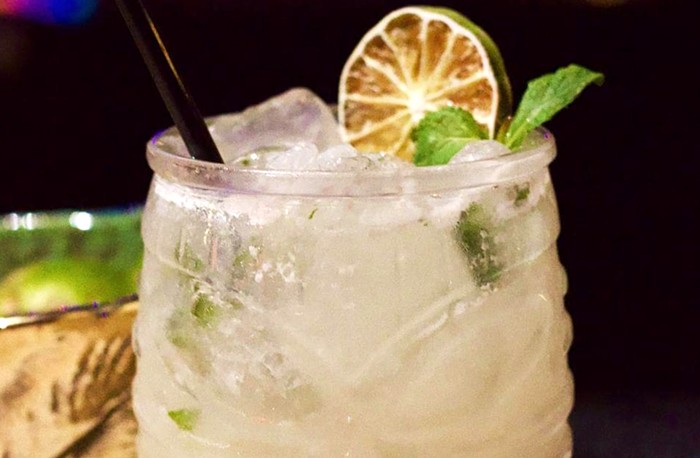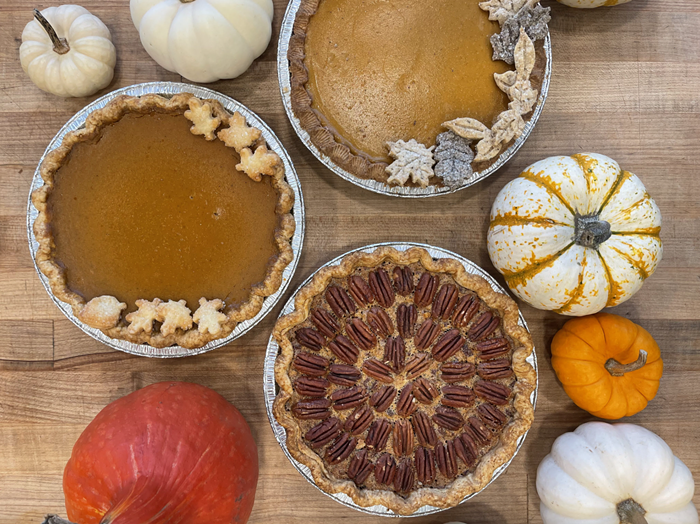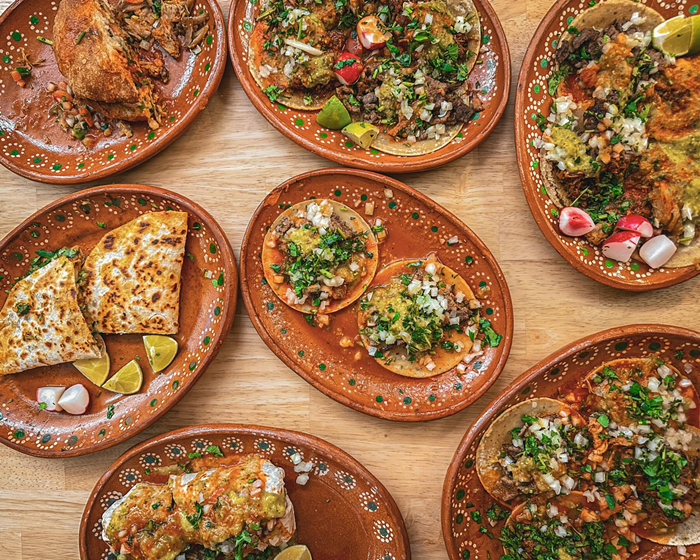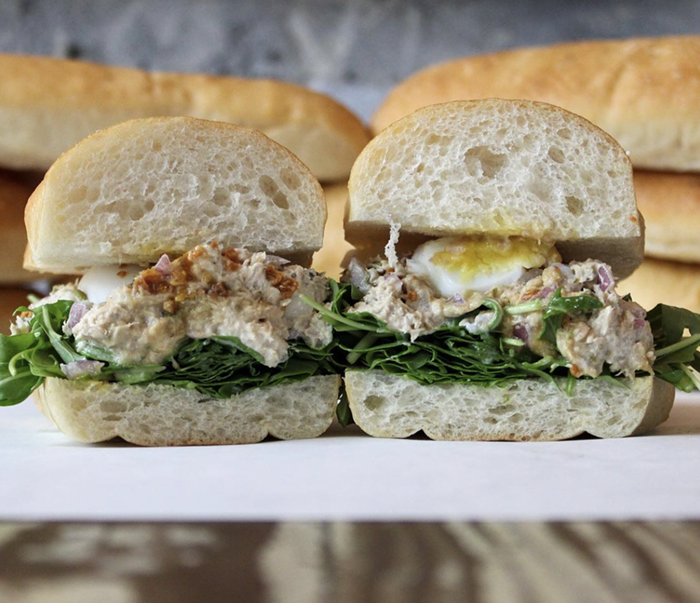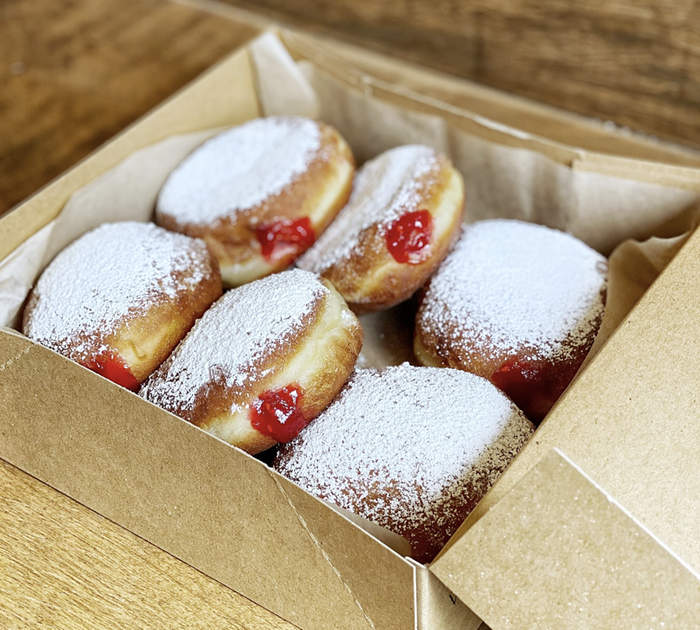The first time I went to Orient Express—then known as Andy's Diner—it felt as if I had passed through some sort of energy field. It was the first bar I had ever set foot in. I was 16 at the time, and was attending a party I discovered through a mailing list called Party Volcano that required wearing a wig. I bought a neon-green used one from Value Village for the occasion.
Outside the bar—which is composed of seven antique train cars, one of which was once Franklin D. Roosevelt's personal transport—flashing neon lights and a Candy Land color scheme reminded me of the dives near the house I grew up in. I'd stop in their parking lots on my way home from school and try to imagine who or what was inside.
Andy's lobby was cast in a deep-red glow. Someone in a silver wig that looked like a glittery pile of whipped mousse took a Polaroid of me and pasted it into a fake passport. In the photo, my wig is falling over my eyes and my braces are exposed by a huge grin—the smile of someone who has discovered magic. That night, I lay in bed awake for hours, a residual tingling in my hands. How could such places exist?
Andy Nagy and his nephew Andy Yurkanin opened Andy's Diner in 1949. It was originally housed in one railcar, but over the years expanded with cars salvaged from Seattle City Light. The inspiration was likely Frank's Diner in Spokane, a railcar diner whose construction predated Andy's by 10 years. Andy's was a lunch-hour destination for Sodo workers and an oddity that drew patrons from all over town. There were frequently lines out the door. Steaks and martinis were the specialties. Around 1991, Nagy died and Yurkanin retired, bequeathing the place to his son until it was sold to a developer. As it turned out, the family owned the diner, but not the land it was on. Its next incarnation was, more or less, its current one—Orient Express, which serves Thai and Chinese food and, carrying on Andy's tradition, stiff drinks. An angry ghost is rumored to haunt the place, making lightbulbs explode above the owner when she expressed her disbelief in the supernatural.
There were no wigs on my most recent trip to the Orient Express, but my dining companion pointed out that all of the upholstery tacks in the car's tall, luxurious leather booths are topped with huge fake diamonds. The burgundy light in the lobby has been replaced by the fluorescent glow of a huge fish tank where orange, football-sized fish swim in slow circles. There seem to be entrances to 10 different rooms in the lobby—a woman at the front desk directed me to the bar car. Old photos lining the walls give the place a museum quality.
Our bartender was a cheerful blur, popping in and out of the train cars with Budweisers and whiskey gingers. She cheered when I ordered her favorite of the specialty cocktails, the Orient Mai Tai ($8.50). It was a huge globe of rum and fruit juice whose layers of hot pink and transparent green reminded me of a blowtorch's flame. It was almost certainly flammable. Sex on Alki Beach ($9) tasted deceptively like pure peach juice—halfway in, I realized no further drinks would be necessary.
I'd always assumed FDR's railcar was only open on special occasions, but I decided to ask our waitress if we could have a look inside. To my delight, she invited us to have dinner there. It's an ornate hardwood room with light fixtures that have become slightly softened with age, like the metalwork on a sunken ship. The overhead lights have the same clinical effect as a spotlight illuminating the seafloor. It didn't feel right being there. An object on the table brushed my menu and I jumped, convinced it had moved by itself.
The pot stickers ($5.95) were fried to a golden brown, with a dense, lightly salty pork filling. The accompanying soy sauce was mixed with something sweet. All the elements of a successful snack—fried, salty, sweet—were present. The cabbage in the equally crispy, golden spring rolls ($4.25) was a little tough, but not enough to make them regrettable.
Fluffy bits of egg and fried tofu topped a huge bundle of soft, wide noodles in my pad kee mao ($9.25). The plate it was served on was more of a platter. For such prices, the entrées, like the drinks, were not fucking around. Only the eggplant in garlic sauce ($8.95) was disappointing. The sauce tasted more like maple syrup, and the eggplant was the texture of liquefying pumpkin.
The pad thai ($9.25) was as good as any I've had and wasn't overly sweet. The eggs, as in the other dishes, were cloud-like. I was wary of the peas topping the egg foo young ($9.95)—they looked like the frozen kind—but they were good, and the cushion of eggs and tender onions was excellent.
Things were picking up in the bar, and the voices in the karaoke cars (yes, they exist, and are rumored to contain lasers) were audible through the layers of polished wood and photos of FDR chomping cigars and waving from the rails. All of the voices sounded happy. No matter how many times I go to Orient Express, I'll have no better guess what's happening inside than I had as a kid. ![]()
